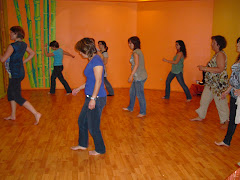Are all meditations the same?
“Just as there are many kinds of medication, there are also many approaches that are termed ‘meditation.’ The vast majority of the research on meditation has been on the Transcendental Meditation technique—and the findings clearly indicate that the TM technique works better than other researched mental techniques to promote health. If research shows that a specific medication helps treat a disorder, it would be irresponsible and illogical to conclude that all medications help treat that disorder. In the same way, research on Transcendental Meditation should not be generalized to include other techniques also called ‘meditation.’ We should intelligently choose what works and what is supported by research. Therefore I strongly support the introduction specifically of the Transcendental Meditation program into our nation’s schools and health care systems.”
James Krag, M.D.Dr. James Krag is president of the Psychiatric Society of Virginia and a Fellow of the American Psychiatric Association. He was president of the Virginia Association of Community Psychiatrists for four years. Dr. Krag is currently Medical Director of Liberty Point, a residential treatment program for adolescents with psychiatric problems.
BENEFITS:
BRAIN: The Transcendental Meditation technique exercises the critical prefrontal cortex of the brain—to make the brain healthier, more integrated, and better able to function together as a whole.
CREATIVITY:
“The Transcendental Meditation technique is a simple, effortless way to ‘dive within, to experience an ocean of pure consciousness, pure creativity, pure knowingness. It’s a unique experience but also very familiar—it is your own
Self.” —David Lynch, filmmaker and chair of the David Lynch Foundation for
Consciousness-Based Education and World Peace
STRESS AND HEALTH:
The unique state of restful alertness gained during the Transcendental Meditation technique promotes health by reducing activation of the sympathetic nervous system—which, in turn, dilates the blood vessels and reduces stress hormones, such as adrenaline, noradrenaline, and cortisol.
WORKPLACE:
“The American worker is stretched thinner than ever. And now what’s being done to ease some of this workplace stress is encouraging employee meditation in the name of maintaining sanity.”—From a CNBC-TV business report
CLASSROOM:
More than 200,000 students in public and private
schools in the U.S. and around the world are
practicing the Transcendental Meditation technique as
part of school-supported Quiet Time programs.
Greater moral maturity.
Increased self-development.
Faster reaction time.
Improved memory.
Increased creativity.
Improved academic performance.
Improved college grades.
Development of intelligence.
INCREASED HAPPINESS:
University of Michigan researchers found that meditating middle school students showed increased happiness and reduced anxiety and depression compared to controls.
PERFORMANCE:
Meditating students at this Iowa private school regularly score in the top one percent of the nation on standardized tests.
SOCIETY AND PEACE
Extensive research published in leading scientific journals demonstrates that the powerful, stress-reducing effect of the Transcendental Meditation technique has a calming, “spill-over” effect in the surrounding population. When individuals practice the Transcendental Meditation and the advanced TM-Sidhi program together in groups, the research has shown a dramatic and immediate reduction in societal stress, crime, violence, and conflict—and an increase in coherence, positivity, and peace in society as a whole.
FIVE COMMOM QUESTIONS:
"What is the Transcendental Meditation (TM) technique?"
It is a simple, natural, effortless
procedure practiced 20 minutes twice each day
while sitting comfortably with the eyes closed.
It’s not a religion, philosophy, or lifestyle. It’s
the most widely practiced, most researched,
and most effective method of self-development.
What happens when you meditate?
The Transcendental Meditation technique allows
your mind to settle inward beyond thought to
experience the source of thought — pure
awareness, also known as transcendental
consciousness. This is the most silent and peaceful
level of consciousness — your innermost Self. In this state of restful alertness, your brain functions with significantly greater coherence and your body gains deep rest.
"How many people practice the TM technique?"
More than five million people worldwide have learned this simple, natural technique — people of all ages, cultures, and religions.
"How much scientific research has been done on the TM technique?"
Over 600 research studies have been conducted at more than 200 universities and research centers (including Harvard, UCLA, and Stanford). These studies have been published in more than 100 journals
"Where did the TM technique come from?"
The Transcendental Meditation technique is based on the ancient Vedic tradition of enlightenment in India. This knowledge has been handed down by Vedic masters from generation to generation for thousands of years. About 50 years ago, Maharishi — the representative in our age of the Vedic tradition — introduced Transcendental Meditation to the world, restoring the knowledge and experience of higher states of consciousness at this critical time for humanity. When we teach the Transcendental Meditation technique today, we maintain the same procedures used by teachers thousands of years ago for maximum effectiveness.




























